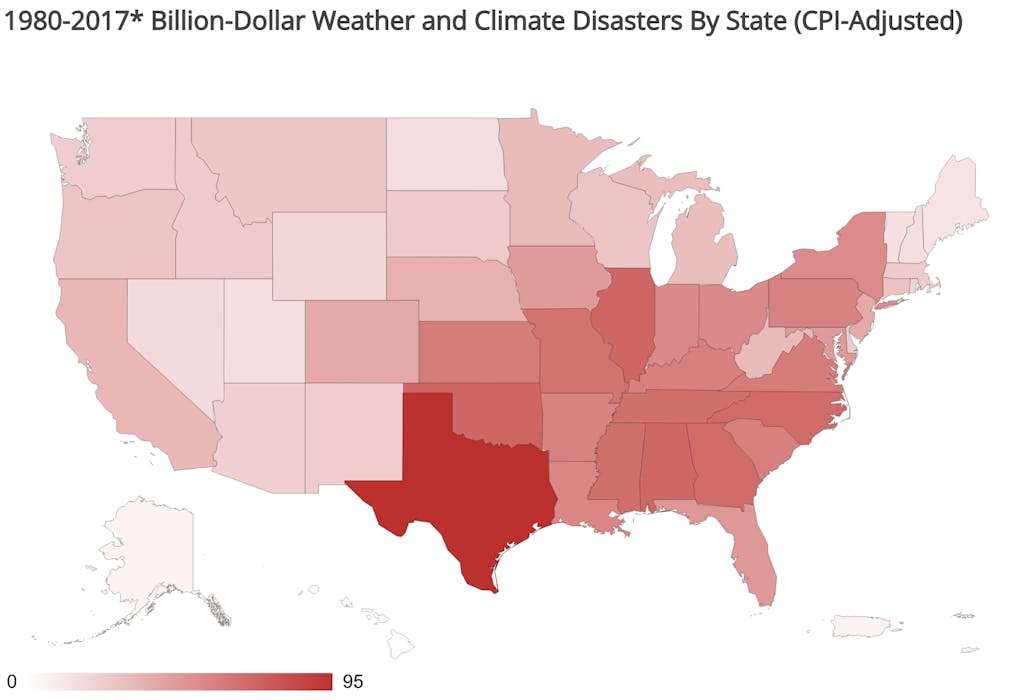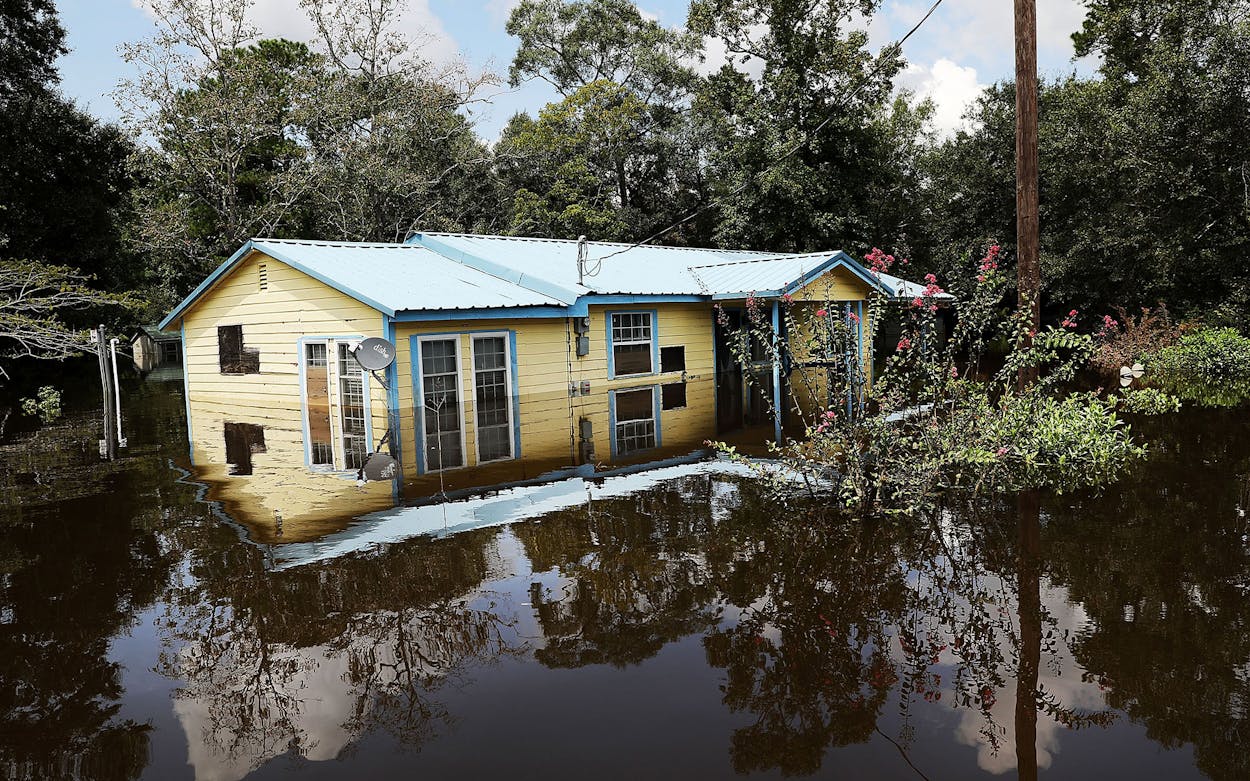The state of Texas and its cities have yet another compelling reason to prepare for climate change. Moody’s recently issued a warning that cities and states that lack “sufficient adaptation and mitigation strategies” to tackle climate change could see their credit ratings fall in the future.
Rising sea levels and warmer global temperatures will lead to more coastal flooding, heavier rainfall events, stronger droughts and heat waves, and more frequent wildfires. Beyond the loss of life, these could lead to “a multitude of challenges in the form of compromised crop yields, economic disruption, damage to physical infrastructure, increased energy demand, recovery and restoration costs, and the cost of adaptive strategies for prevention or impact mitigation,” the Moody’s report cautioned. “These challenges can result in lower revenue, increased expense, impaired assets, higher liabilities and increased debt, among other effects.”
So, going forward, Moody’s will evaluate how vulnerable a particular issuer is to climate shocks and what steps they’re taking to allay these threats. “Local governments that face a higher risk of climate shocks are specifically asked by analysts during the rating process about their preparedness for such shocks and their activities in respect of adapting to climate trends,” the report says.
Jeff Nesbit of Climate Nexus hailed this move as “a welcome but long overdue development” in an op-ed in the New York Times last week. If other credit agencies follow Moody’s lead, “the pressure will be on municipal and state governments around the country to address the underlying climate risks they face or confront the very real possibility that the costs of borrowing money will suddenly become a lot more expensive,” Nesbit writes.
Though Moody’s does not indicate in its report which cities are the most vulnerable to economic damages from climate change, it does list key indicators the organization uses to assess risk, according to the Chicago Tribune. “Economic activity that comes from coastal areas, hurricane and extreme-weather damage as a share of the economy, and the share of homes in a flood plain” are among those risk factors. Based on those indicators, Texas has more exposure to climate risk than other states. Climate change is not creating new risks, but exacerbating existing ones (that’s why the Defense Department has long referred to climate change as a “threat multiplier”). And in Texas, we already get floods, wildfires, droughts, and heatwaves, as Harvey, the panhandle fires of 2017, and the 2011 drought should remind us.
Since 1980, Texas has endured more billion-dollar weather disasters than any state in the union. Don’t believe me? Here’s a NOAA map that might convince you:

As Moody’s report notes, 31.1 percent of Texas’s total GDP is produced by its coastal counties. And a full 26.4 percent of housing units in those counties have been built in one-hundred- and five-hundred-year flood plains. So as hurricanes get stronger, dealing with them will only get more expensive, unless we adapt to these changing risks.
- More About:
- Energy







